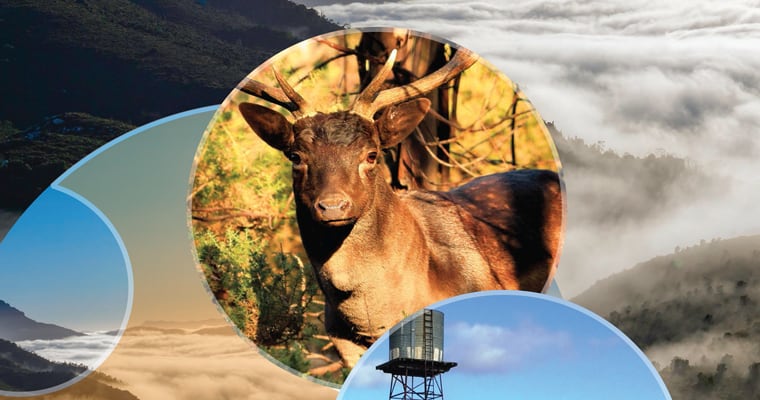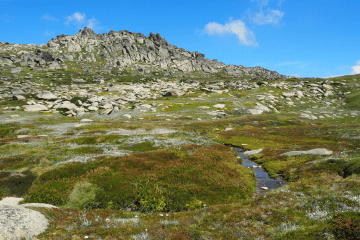The Invasive Species Council, NSW Nature Conservation Council and the Biodiversity Council have criticised a NSW Upper House inquiry report by the Animal Justice Party for failing to back legal changes to allow local governments to bring in cat containment rules to protect wildlife and pet cats. NSW is lagging behind the rest of Australia and millions of native animals are paying the price.
While the committee found “there is an urgent need to implement cat management strategies in NSW to address the overpopulation of cats, both in urban environments and in the wild”, they also found NSW “may not be ready to adopt mandatory cat containment laws”.
The conservation organisations say evidence from expert witnesses and other states proved otherwise – and are urging Premier Chris Minns to listen to the community and deliver these important reforms through the current Companion Animals Act review.
Invasive Species Council CEO, Jack Gough said:
‘It’s disappointing that this parliamentary committee didn’t support a clear statement backing cat containment, but we continue to have positive engagement with the Labor Government and understand that this is under serious consideration through the Companion Animal Act review.
‘Roaming pet cats are sending our suburbs silent. Every year of inaction results in the death of 66 million native animals in Greater Sydney alone.
‘Despite strong public backing for cat containment, outdated laws in NSW prevent councils from acting. This is a stark contrast to other states like Victoria which empower councils to introduce containment rules, and over half have done so. The ACT has also mandated cat containment territory-wide.
‘It’s time to bring NSW in line with every other state. The idea that NSW is not ready flies in the face of evidence and experience in other states. This is a simple change to empower communities to protect wildlife and protect cats.
‘It’s great to see Liberals, Nationals and Greens backing this overdue reform. If Premier Minns steps up and makes this change, he will be surprised by the overwhelming community and political support he receives.
‘It’s time for Premier Minns to act to make sure cat containment is supported, for the sake of our backyard birds, lizards and small mammals and the health of our pet cats.’
Nature Conservation Council NSW CEO, Jacqui Mumford said
‘Owning a pet cat should come with clear responsibilities to ensure your pet is not roaming around killing our native birds, mammals, reptiles and frogs.
‘Many of the actions required to protect our wildlife require complex legislative reforms and significant investment from the government. In contrast, by simply removing the barriers to local councils instituting cat containment, we could save millions of native animals.
‘We’re calling on Premier Minns, NSW Environment Minister Penny Sharpe and Local Government Minister Ron Hoenig to sit down together and fix this.’
Biodiversity Council member Professor of Wildlife Ecology Sarah Legge from Charles Darwin University said:
‘The committee’s decision to not support mandatory cat containment is a missed opportunity to improve the welfare of pets cats, reduce the toll they take on native wildlife and reduce the spread of cat-borne diseases in the community.
‘The decision is not in line with community expectations around responsible pet ownership. Our independent surveys have shown that the majority of the New South Wales community (65%) support requiring cat owners to keep their cat contained to their property, and only 9% are opposed.
‘Each year in New South Wales, cat-borne diseases cause an estimated 2,500 hospitalisations and 165 deaths and cost the economy $2 billion based on costs of medical care, lost income and related expenses.
‘There are more pet cats in New South Wales than ever before, with numbers approaching 2 million.’
Media inquiries: (02) 8006 5004
Photos and other multimedia to accompany this story are available here.
The Nature Conservation Council and Invasive Species Council, along with Birdlife Australia, WIRES and the Australian Wildlife Society, are calling on the NSW Government to:
- Amend the NSW Companion Animals Act 1998 to enable local governments to enforce anti roaming laws for pet cats at a local level.
- Allocate a minimum of $9 million to fund compliance, education, desexing, identification and registration programs.
- Encourage local governments to develop companion animal management plans.
- Develop a state-wide web resource for pet owners.
- Streamline pet identification and registration processes.
- Make desexing mandatory state-wide.
Key facts on roaming pet cats
- Collectively, roaming pet cats kill 546 million animals per year in Australia – 323 million of these are native
- In the Greater Sydney area, there are approximately 1 million pet cats and roaming pet cats kill approximately 66 million native animals every years
- Around 70% of cat owners in Australia allow their cats to roam, and 78% of these roaming cats hunt
- 85% of the animals killed by pet cats are not brought home
- On average, each roaming, hunting pet cat kills more than three animals every week – for a total of 186 animals per year. This number includes 110 native animals (40 reptiles, 38 birds and 32 mammals).
- Hunting pet cats kill 30-50 times more native animals per square kilometre in suburbs than feral cats kill per square kilometre in the bush. This is because pet ownership allows inflated density: While feral cats kill 4x more animals per year, there are between 54 and 100 roaming and hunting cats per square kilometre in suburbs compared to only one feral cat for every 3-4 square kilometres in the bush.
- Pet cats kill 6,000 to 11,000 native animals per square kilometre each year in urban areas
- When cats prowl and hunt in an area, wildlife have to spend more time hiding or escaping. This reduces the time spent feeding themselves or their young, or resting.
- An analysis by the Biodiversity Council, Invasive Species Council and Birdlife Australia on the impact of roaming pet cats nationwide is available here








